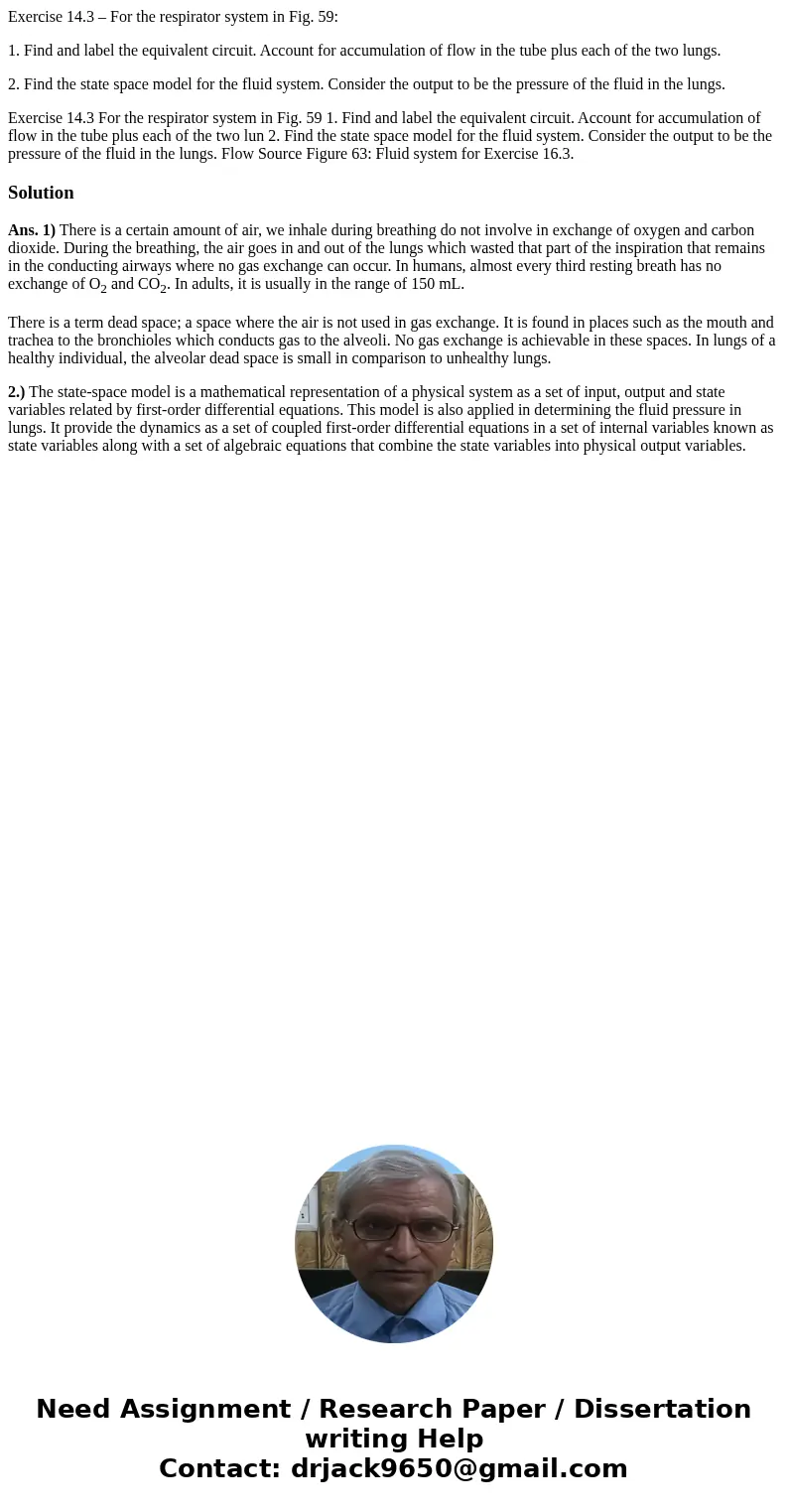Exercise 143 For the respirator system in Fig 59 1 Find and
Exercise 14.3 – For the respirator system in Fig. 59:
1. Find and label the equivalent circuit. Account for accumulation of flow in the tube plus each of the two lungs.
2. Find the state space model for the fluid system. Consider the output to be the pressure of the fluid in the lungs.
Exercise 14.3 For the respirator system in Fig. 59 1. Find and label the equivalent circuit. Account for accumulation of flow in the tube plus each of the two lun 2. Find the state space model for the fluid system. Consider the output to be the pressure of the fluid in the lungs. Flow Source Figure 63: Fluid system for Exercise 16.3.Solution
Ans. 1) There is a certain amount of air, we inhale during breathing do not involve in exchange of oxygen and carbon dioxide. During the breathing, the air goes in and out of the lungs which wasted that part of the inspiration that remains in the conducting airways where no gas exchange can occur. In humans, almost every third resting breath has no exchange of O2 and CO2. In adults, it is usually in the range of 150 mL.
There is a term dead space; a space where the air is not used in gas exchange. It is found in places such as the mouth and trachea to the bronchioles which conducts gas to the alveoli. No gas exchange is achievable in these spaces. In lungs of a healthy individual, the alveolar dead space is small in comparison to unhealthy lungs.
2.) The state-space model is a mathematical representation of a physical system as a set of input, output and state variables related by first-order differential equations. This model is also applied in determining the fluid pressure in lungs. It provide the dynamics as a set of coupled first-order differential equations in a set of internal variables known as state variables along with a set of algebraic equations that combine the state variables into physical output variables.

 Homework Sourse
Homework Sourse